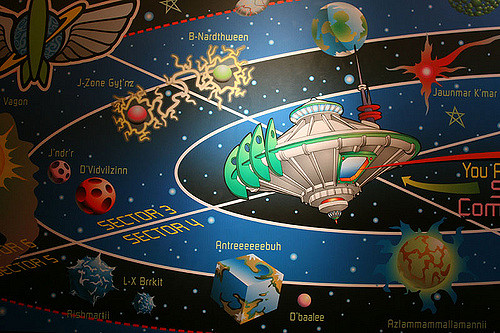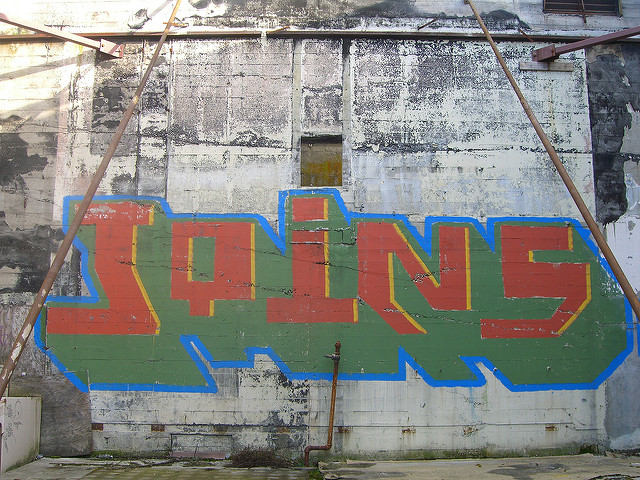When Stardog is used to unify relational data sources, it facilitates powerful query and data management features. This post introduces Stardog’s virtual graph feature and explores how to access data from existing relational sources.
Stardog is based on the graph data model because graph is uniquely well-suited to solving unification problems due to its flexibility and expressivity. We believe declarative reasoning is key due to its unique ability to describe, map, and preserve the consistency of data.
Mapping and R2RML
Traditional data integration tools are based on the relational data model and employ vendor-specific mapping languages and methods. The difficulty arises when combining several sources, which were modeled differently and conform to independent sets of rules and constraints. First, a single shared data model has to represent a global view over the sources. Second, significant manipulation and cleansing are typically required to transform between the source and target schema as well as make the source data conform to a set of standardized rules.

Stardog supports the standard W3C R2RML mapping language for defining how data in a relational system maps to RDF graphs. In addition, we’ve created the Stardog Mapping Syntax to simplify the process of writing these mappings. Mappings of this sort specify the relationship between source data, i.e. relational data in the form of a table or SQL query, to target data, a graph of RDF triples. Once the mapping is created, Stardog seamlessly supports both federation (live query) and materialization (extraction) methods to access the relational data.
How to Map Relational Data into Stardog
Let’s look at some mappings and how they can be used in Stardog. We’ll first build a mapping and create a virtual graph in Stardog. Then we’ll show how it can be used for both federated queries and materialization (ETL).
We’ll use the classic RDBMS tables EMP and DEPT as given here. We’ll need to create an R2RML triples map per relation or table that we want to access in the form of triples. A triples map is comprised of three sections:
- a source “logical” relation/table
- a target subject map
- a set of target predicate-object maps.
Each row in the source table is used to create one triple for each predicate-object pair. The subject is fixed for all triples built from a single row. We can see the basic intuition by examining how a single row maps to a set of triples. We first need to define a triples map’s logical table and subject map:
<#TriplesMap1>
rr:logicalTable [ rr:tableName "EMP" ];
rr:subjectMap [
rr:template "http://data.example.com/employee/{EMPNO}";
rr:class ex:Employee;
];
This mapping says that we’ll use the EMP table and that the subject of all triples created by rows in this table will be an IRI based on the template over the EMPNO field. Conceptually, each row represents an employee where the EMPNO field uniquely identifies the employee and the remaining fields (ENAME, JOB, DEPTNO) are attributes of the employee.

Our mapping also specifies that an employee represented by a row in the table is a member of the ex:Employee class in our RDF model. We’ll add to this two predicate-object maps indicating that two triples will be created for each row:
rr:predicateObjectMap [
rr:predicate ex:department;
rr:objectMap [ rr:template "http://data.example.com/department/{DEPTNO}" ];
];
rr:predicateObjectMap [
rr:predicate ex:name;
rr:objectMap [ rr:column "ENAME" ];
].
Finally, let’s take a look at the result of applying this mapping to a single row from the EMP table. Given the row:
emp_no | ename | dept_no
--------|-------|---------
7369 | SMITH | 10
We can expect that three triples will be created:
<http://data.example.com/employee/7369> rdf:type ex:Employee.
<http://data.example.com/employee/7369> ex:name "SMITH".
<http://data.example.com/employee/7369> ex:department <http://data.example.com/department/10>.
Hopefully it’s clear how the triples are generated from the input row, given the R2RML mappings. Now let’s see how to use this type of mapping by creating a Stardog virtual graph.
Working with Virtual Graphs
Mapped relational sources are exposed in the same way as named graphs (i.e., subgraphs accessible by name) in the RDF model. The triples representing the source relational data are considered to be in a named graph that is not present (i.e., not materialized) in the local RDF graph; hence, we say that the named graph is virtual.
Think of the mappings as proxies for the data. With these proxies in the graph, and in a machine-understandable form that Stardog can process, we can turn them into the nodes and edges we need at any point: either eagerly (in an ETL fashion) or lazily (in a federated query fashion). Stardog thus subsumes the functionality of ETL, virtual/federated query, and system of record database in a single, coherent system based on declarative graphs.

So let’s create this virtual graph. In addition to the mappings, we need to specify the connection information to the source relational system. This is basically a JDBC URL and credentials. Rather than repeat it here, I’ll just link to the documentation.
To create the virtual graph dept in Stardog, we first put the mappings in a file called dept.ttl and the connection properties in a file called dept.properties. We create the virtual graph from the command line as follows:
$ virtual add dept.properties dept.ttl
At this point, we can begin querying the relational data by way of the virtual graph just as easily as any other data loaded directly into Stardog.
The graph name we use in SPARQL queries is derived by appending the virtual graph to the virtual:// prefix. We can query all employees and their names from the virtual graph as follows:
select * where {
graph <virtual://dept> {
?e a ex:Employee ; ex:name ?ename
}
}
We can find the department and name of a specific employee:
select * where {
graph <virtual://dept> {
<http://data.example.com/employee/7369> a ex:Employee ;
ex:name ?ename ;
ex:dept ?dept
}
}
We can join with salary data that’s already in Stardog:
select * where {
graph <virtual://dept> {
?e a ex:Employee ; ex:name ?ename
}
?e ex:salary ?salary
}
The utility and flexibility of virtual graphs cannot be understated. The preceding examples use a method of access called federated query. This means that SPARQL evaluation includes a step to connect to the remote data source and request rows by way of a generated SQL query.

Federated queries are convenient during prototyping and development but are not necessarily the best choice for production deployments. It depends on use cases and requirements of some app and, of course, on the nature of the data itself. The data is always up to date but queries are subject to availability and administration requirements of the source system. Large queries may increase the load on databases backing production applications.
Next we examines an alternative access method whereby virtual graph data is materialized into Stardog.
Materialization of Virtual Graphs
Stardog’s power as a data unification rests in part on using the right abstraction, i.e., declarative graphs. The right abstraction means we can switch between wholly different operational models for unifying a data source–eager materialization or (lazy, i.e., query-time) virtual query–without changing code, models, or modeling.
Now that we’ve created a virtual graph and explored it with same basic queries, let’s look at another deployment option: materialization. Think: ETL, that is, ETL systems are eager materialization systems. Materialization consists of generating all possible triples that can be mapped from (one or more) source(s), including relational databases, and storing them directly in Stardog.
Materialization differs from federated query in a few key ways:
- Evaluation of queries over materialized data does not involve any communication with the source system. This means query performance characteristics shift as no data is transferred and all local Stardog query evaluation optimizations are possible. This also means that queries are not tied to availability of the source system.
- Materialization involves a (possibly lengthy) step of generating tuples and storing them in the Stardog RDF index. The view of the source data is essentially “frozen” at the point in time when the materialization is performed and updates must be managed separately. Additionally, some Stardog features such as the text search index are only available (currently) over natively-managed data.
The powerful thing about virtual graphs in Stardog is that there’s very little difference between federation and materialization and it’s easy to switch between the two. In fact, this choice can be made on a source by source basis.

Stardog seamlessly subsumes both ways of unifying data, federated queries and materialization, within an enterprise-grade system of record database.
To materialize a virtual graph in Stardog, we use the virtual import command. Materialization uses an optimized code path specifically designed to generate and index the triples from the remote source. Conveniently, it uses the same set of mappings and connection properties as the federated approach. Here’s an example of materializing the employee/department data into a named graph http://data.example.com/employees in the emp database:
$ stardog-admin virtual import -g \
'http://data.example.com/employees' emp dept.properties dept.ttl
Following the completion of this command, we now have all the triples generated by the triples maps indexed in the http://data.example.com/employees graph. All the queries shown in the federated examples will work by change the graph name from virtual://dept to http://data.example.com/employees.
Virtual Graphs and Reasoning
Virtual graphs provide a way to view data from relational sources as graphs. When combined with reasoning, we find a uniquely powerful data unification platform. Stardog’s OWL 2 reasoning engine is based on query-time rewriting which means it works equally well with both federated and materialized virtual graph access.
This also means reasoning works transparently with data combined from multiple sources. It’s possible to model relationships across data in different databases with these relationships involved when queries are executed.

Virtual graphs provide access to “raw” data and reasoning provides a way to model higher-level views and relationships at the Stardog unification level. In the case of employee data, this can be combined with project management data, third party performance appraisal, email, etc. The key components enabling data unification are available in Stardog.
Conclusion
We’ve looked at the Virtual Graph feature in Stardog. It’s a key enabler of Stardog as an enterprise data unification platform since it subsumes the two primary operational patterns for doing enterprise data integration, i.e., materialization (ETL) and federated query.
That means your applications can couple loosely with enterprise data sources by being completely agnostic as to those operational details, which may (and now can) change in arbitrary ways.
If your app, Hadoop cluster, analytics or compliance framework doesn’t know about those details, then it can’t couple tightly to them and, thus, can’t break when they (inevitably) change.
We’ve seen how to create mappings, how virtual graphs can be accessed, and how they can be used. Additional operational details are provided in the docs.
Download Stardog today to start your free 30-day evaluation.
Jess Balint
11 January 2017
